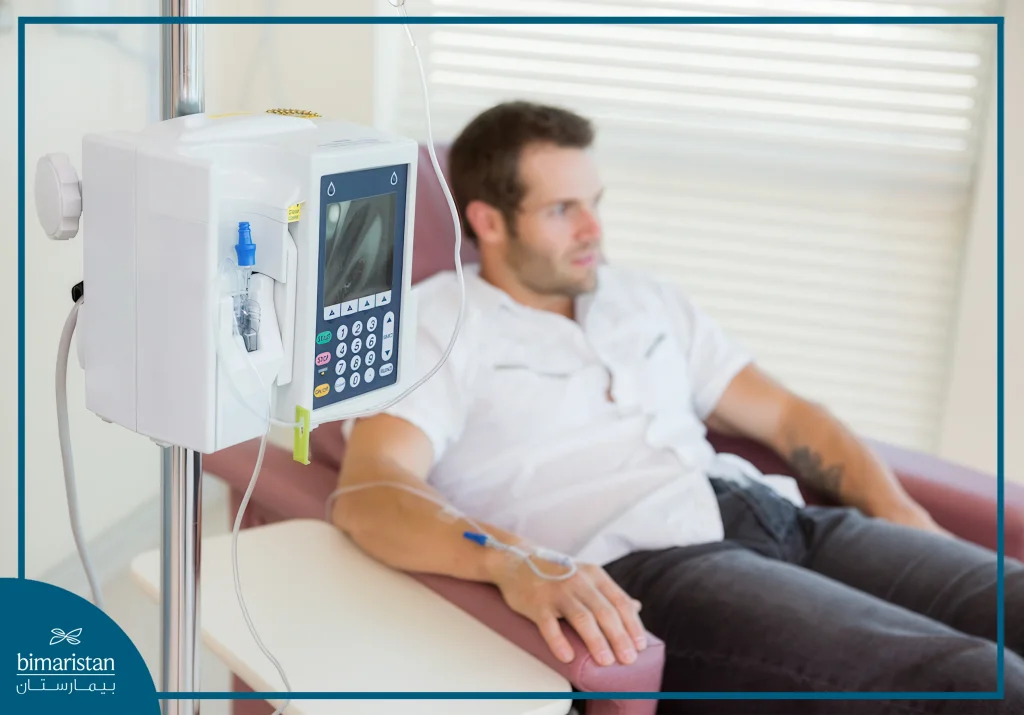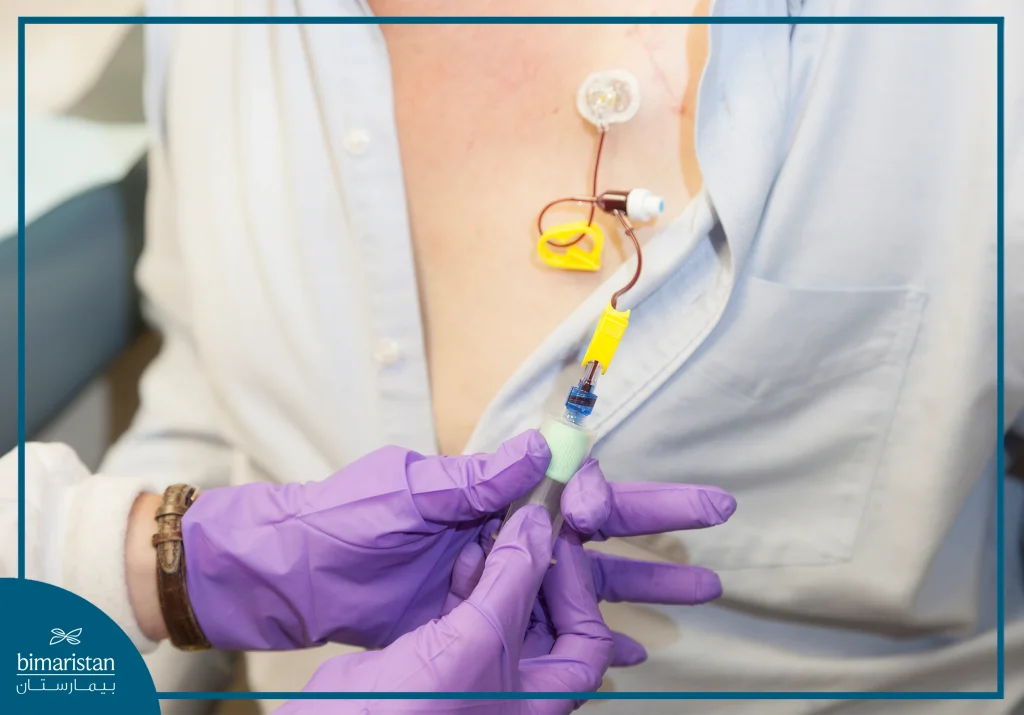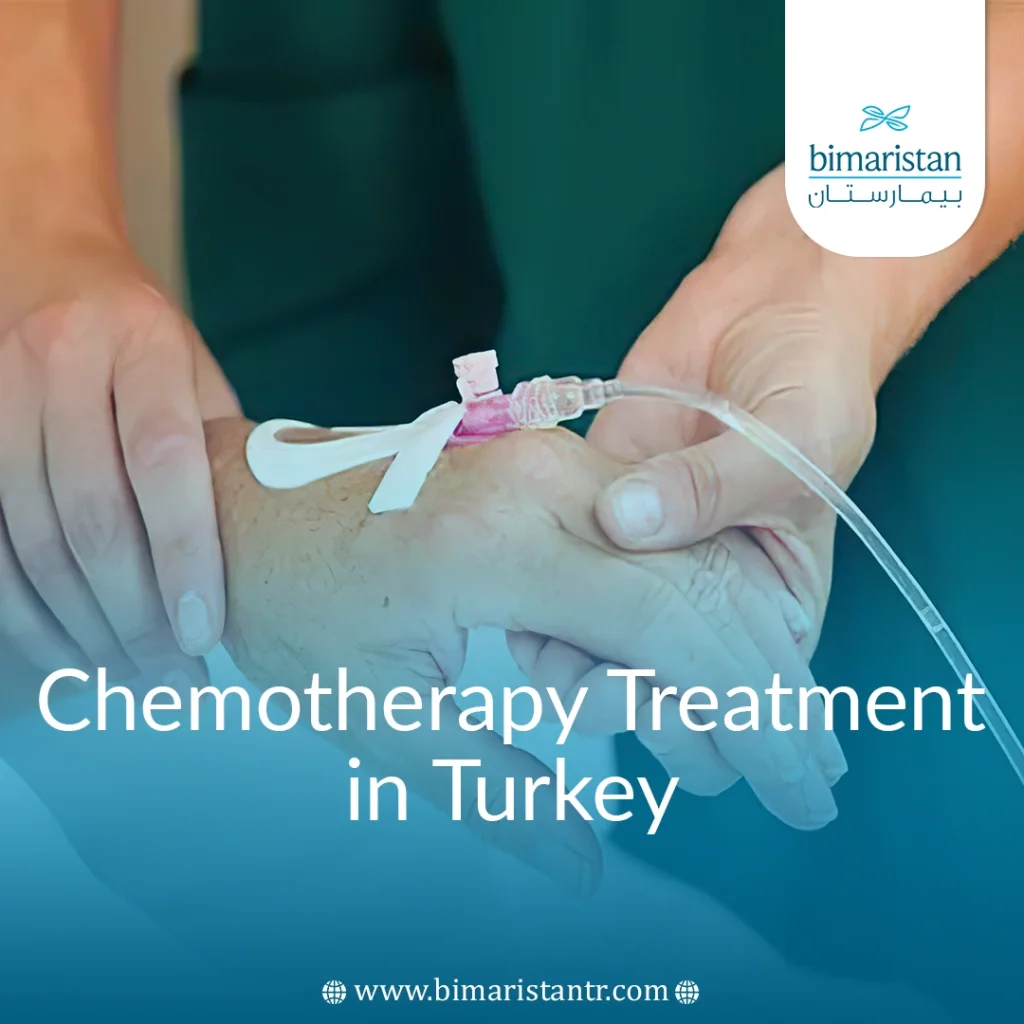Chemotherapy treatment in Turkey is one of the most important and effective treatments mainly used in cancer treatment of all types, in addition to treating various other conditions. It is also used to prepare and condition patients to receive other types of treatment such as bone marrow transplantation.
In this article, we review all the details of chemotherapy treatment in Turkey, its areas of use, side effects, and other important details for patients who go to Turkey to receive this type of treatment, such as costs and new medical procedures.
What do we mean by chemotherapy treatment?
It refers to treatment using drugs or pharmacotherapy, which aims to destroy and kill bacteria, viruses, fungi, and fast-growing cells in the body, such as cancer cells, which divide faster than others.
It is often used in combination with other types of treatment, such as surgery and radiation or hormone therapy. This depends on several factors, including:
- The stage and type of the patient’s cancer, their general health, and their personal desire to choose the treatment that is most comfortable for them.
- The location of the cancer-causing cells.
What is the purpose of using chemotherapy treatment in Turkey?
Chemotherapy treatment is a drug that a patient takes orally or intravenously to circulate in the body through the bloodstream.
Chemotherapy is primarily used to destroy cancer cells and reduce the likelihood of cancer spreading. It also reduces the size of the tumor. It also minimizes the side effects caused by other types of treatment.
Suppose you have had surgery to remove a cancerous tumor, such as a lumpectomy for breast cancer. In that case, your oncologist may recommend this type of treatment to ensure that any remaining fast-growing cancer cells are destroyed.
It is also used to prepare the patient for other treatments, such as radiation therapy. It can also be used to shrink the tumor so that it can be surgically removed, and in the case of late-stage cancer, chemotherapy may help relieve pain.
Much lower doses than those used to treat cancer can be used to help with disorders in which the immune system attacks healthy cells, such as lupus (a skin disease) or rheumatoid arthritis.
How does chemotherapy treatment work, and how long does it take?
In some cases, a cancer patient may need to undergo chemotherapy before or after radiation therapy, or the two treatments may be combined. They usually receive chemotherapy in a hospital or clinic or at home after being trained to take chemotherapy treatment the right way and at the right time.
Chemotherapy treatment is often given to a patient for a set period of time, such as 6 months or a year. It is given in several parts every few days or weeks, and there may be a break from treatment for several days, weeks, or even months in between. This time off from treatment gives the cancer patient’s immune system time to reproduce new healthy cells and minimize the symptoms caused by this type of treatment.
The number of sessions depends on:
- The type and stage of the cancerous tumor.
- The purpose of chemotherapy.
- Method of taking chemotherapy (intravenous, oral, etc.)
- The body’s response to treatment. The better the response, the fewer the number of treatment sessions.
Chemotherapy treatment drugs are used to treat cancer
- Bio alkylating agents are known as cytotoxic drugs, which work by inhibiting the proliferation activity of cancer cells and leading to their destruction.
This type of chemotherapy involves drugs that are:
- Mustard gas derivatives: Cyclosulfamide. Mechlorethamine. Chlorambucil. Ifosfamide. and malgan.
- Try ethylene amine: Thiotepa and hexamethylmelamine.
- Alkil Slaguat: Busulgan
- mineral salts : Oxaliplatin. Cisplatin. and carboplatin.
- Nitrosozine: Streptozocin. Lomustine. Clermostin
Nitrosoureas are able to cross the blood-brain barrier and are an effective option for treating brain tumors and cancer.
- Plant alkaloid drugs: Alkaloids work by attacking and dividing cancer cells at different stages of the division cycle.
They include vica alkaloids. Taxanes, podophyllotoxin, and camptothecin analogs.
- Antimetabolites
This type of chemotherapy involves chemicals that are chemically similar to the natural substances found in cells. They work by inhibiting and stopping the division of the cancer cell.
- Topoisomerase inhibitors
Topoisomerase enzymes are responsible for controlling the structural processing of DNA in cells. They are essential for cell division and multiplication. These inhibitors inhibit the action of topoisomerase enzymes inside the cancer cell.
How are these medications administered?
Chemotherapy (chemo drugs) is given in a variety of ways:
- Oral chemotherapy treatment
Some chemotherapy drugs are taken by mouth in the form of pills, capsules, or liquids. They can be absorbed from the tip of the stomach or directly under the tongue. Cancer patients get their chemotherapy drugs from a pharmacy and take them at home according to their doctor’s instructions. Some chemotherapy drugs are taken daily, while others are given daily for 4 weeks, followed by a 2-week break, as prescribed by the doctor.
- Intravenous chemotherapy treatment
Sometimes, a cancer patient’s chemotherapy treatment requires the drugs to be administered directly into a vein. In this case, the treatment takes from a few minutes to a few hours. This type of medication is quickly absorbed into the body’s circulatory system. Some types of intravenous infusions include the following:
– Angioplasty: Your doctor creates a line in your arm or hand and the injection of medications can last for several minutes to a few days.
-PICC (peripherally inserted central catheter): This method is temporary but can last from 6 weeks to a few months. The doctor places the long plastic catheter into one of the largest veins in the cancer patient’s arm. This can be done at home by attaching it to a portable pump.
-Non-tunneled catheterization: This method is used as a short-term option in emergency situations. It is done percutaneously, the clavicular or jugular vein is accessed and the line passes through the superior vena cava to the right atrium of the heart. It requires careful maintenance and regular dressing changes.
Tunnel catheter: This catheter passes through the center of the chest, bypasses the subcutaneous cells, and reaches the superior vena cava, which enters the right atrium of the heart. It can be left in for years with little chance of infection. It is a good option in cases of intensive treatment, such as a bone marrow transplant.
A port-a-cath is a permanent option. It is usually placed by a surgeon or radiologist and can be placed at any age between three and five.

- Injection chemotherapy treatment:
Chemo injections can be given intramuscularly or injected under the skin, and they may be given in the arm, leg, or abdomen.
– Subcutaneous injections:
Chemotherapy drugs are injected with a short needle. This method is used for some biological response rates and chemotherapy drugs. If your platelet count is low, these injections are unlikely to cause any more bleeding than an intramuscular injection.
– Intramuscular chemical injection:
In this method, the drugs are injected with a large needle specialized for this purpose, where the chemotherapy injection penetrates the muscle layer so that the drug is deposited in the muscle tissue. Most cases of intramuscular chemotherapy are not applied due to its potency in cancer patients. It is also not recommended for people with low platelet counts due to the possibility of intramuscular bleeding.
- Intra-arterial chemotherapy treatment:
An artery is a blood vessel that carries blood from the heart to another part of the body. Sometimes, chemotherapy is injected into an artery that goes directly to the cancer site. This type of treatment is useful for patients with colon cancer, limb cancer, pancreatic cancer, and stomach cancer.
- Localized chemotherapy treatment:
Cancer patients can take some types of chemotherapy drugs in the form of a cream that is applied to the skin to be absorbed. This form of chemotherapy is not very commonly used in cancer treatment but is used to treat skin cancer.
- Intraventricular chemotherapy treatment:
The drugs in this procedure are intended to reach the cancer patient’s cerebrospinal fluid. Since the blood-brain barrier prevents many of them from reaching it, this can be done in two ways: lumbar puncture and the Omaea reservoir. A device with a catheter is placed in the subcutaneous layer on the scalp. It is then connected to the lateral ventricle of the brain. A small needle is placed through the Omaea reservoir to inject drugs. This type of chemotherapy is good for leukemia.
- Intraperitoneal chemotherapy treatment:
In this case, the chemotherapy drug can be discharged directly into the cancer patient’s abdominal cavity, which is the general cavity surrounding the organs. This causes the organs to drown in the drug before it is absorbed at the site of the cancer or tumor.
- Intra-articular chemotherapy treatment:
This type of chemotherapy uses a urinary catheter to reach the urinary bladder of cancer patients. This type of treatment is useful for people with superficial invasive bladder cancer.
- Intrapleural chemotherapy treatment:
Chemotherapy drugs are given in the pleural cavity to control malignant pleural effusions and are used to relieve the symptoms of cancers such as lung cancer.
- Implantable chemotherapy treatment:
This treatment is done by placing a glycadel wafer in the cavity after the brain tumor has been removed. It can be left in for two or three weeks to make sure that all the cancer cells have been completely killed in the area around the brain tumor site.
Side effects of chemotherapy
Chemotherapy treatment works by killing and destroying rapidly dividing cells, including both cancerous and non-cancerous cells. These cells can be adversely affected by chemotherapy and are found in: Blood, hair, skin, and the lining of the intestines, which leads to a range of side effects. These include the following:

- Easy bruising and excessive bleeding
- diarrhea
- Sore and dry mouth
- fatigue
- fever
- Hair loss
- Anorexia.
- nausea
- vomiting
- weight loss
- pain
- Inflammation
- anemia
- Constipation
- Neuropathy
- Problems with memory and concentration
- Skin and nail changes
- Insomnia
- Sexual changes
Most of these effects of chemotherapy stop as soon as the treatment ends.
However, there is a risk of long-term effects that can occur even years after chemotherapy, depending on the type of chemotherapy drugs used, which can damage the function of the heart, kidneys, lungs, nerves, and reproductive organs.
What happens after cancer chemotherapy treatment?
There will be regular medical follow-ups during and after chemotherapy treatment in Turkey for cancer patients under the supervision of a special doctor and cancer treatment team. This will include tests such as imaging techniques, laboratory tests, and possibly more. The doctor can change the chemotherapy plan at any time according to the information and results that the cancer patient shares with him/her about the effect of chemotherapy. This is done by telling the doctor about any side effects or issues with the treatment they are receiving so the doctor can suggest solutions and adjust the treatment if necessary.
Sources:
